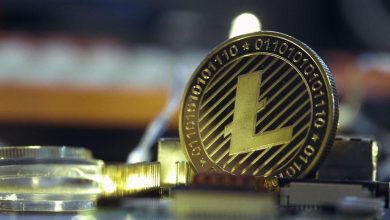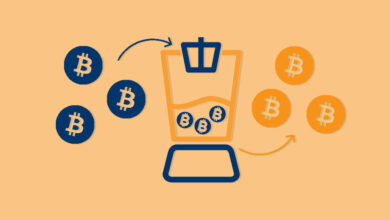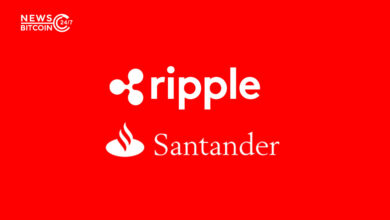Power Play: Is Bitcoin Mining in 2020 Worth the Hassle?

Ultimately, bitcoin mining is worth it, provided you have the right resources to hand. Profitability of mining is just one motivating factor for many who perform the action, as gain is only one reason why mining is important to the network itself. The other reason open access to mining capabilities on the network is imperative, is that a varied mining pool means a decentralized bitcoin. Which is something that is important to every user.
Whether you’re wielding an ASIC and minting bitcoin, or merely jumping onto Bitvavo and managing your portfolio- you’re interacting with an incredibly exciting and wonderful system of finance. A fully decentralized, borderless, and pseudo-anonymous currency. One that could reasonably become the future of financial institutions as we know them.
Why Bitcoin Mining Must Exist
Bitcoin mining is realistically the backbone of the entire functionality of the bitcoin network. Mining is the act of validating transactions made on the network and logging them into the public ledger- the blockchain. The Blockchain is a distributed ledger technology that both ensures the safety of bitcoin and its decentralized system. This validation process proves that transactions are valid, singular, and allows any user of the network to view them- further verifying the legitimacy of the network.
Miners verify transactions by solving intricate mathematical puzzles, called cryptographic algorithms. Nodes, or computers across the network that supply the computational power to solve these complex equations, are rewarded for their efforts in bitcoin. This is called a block reward. Each time an equation is solved it is placed in a “block”. These blocks are an immutable record of that transaction. Blocks are strung together on a “chain”. So that each bitcoin in existence is accounted for. Creating the blockchain, and making it possible for future transactions to continue happening.
How Bitcoin Mining Is Profitable, Even in 2020
There are a few ways that bitcoin mining still remains possible, even in 2020. Mostly, the biggest costs associated with bitcoin mining are the hardware- the function units of computers used to solve the complex equations; and the energy costs. Computers require energy to work- that much we know. But as the cryptographic algorithms become more complex, computers and their associated hardware must work harder in order to solve them in a timely manner.
As computers work harder, they require more energy. Both to power the hardware itself and to keep computers cool, as heat is generated as these units work harder. Three ways to keep down operational costs of mining bitcoins are:
- Buying sophisticated hardware that is purpose-built for solving bitcoins specific algorithms, known as ASIC (application-specific integrated circuits). This cuts down on the energy necessary because computers don’t have to work as hard to solve equations.
- Harvesting your own energy, or living in a place where energy is cheap. By using solar, wind, or other type of easily renewable and self-harvestable energy, costs are dramatically reduced.
- Living somewhere cold. It sounds simple enough, but if computers are able to keep cooler due to low ambient temperatures, they require less energy.
These three things can help cut the operational costs of mining bitcoin yourself. However, if you can’t get your hands-on expensive equipment or cheap energy, there are other options available. Joining mining pools or cloud mining are also ways that more people around the world can gain reasonable access to mining and the profits to be had. Cloud mining is essentially purchasing space and time on another’s computing power. Sort of like crowdfunding an already existing mining set up. There are also ways to mine for other types of cryptocurrency and convert them into bitcoin, thus creating a basis for bitcoin profit without having to mine a popular network.
Mining Adjustments Happen Every Day
Part of what helps maintain bitcoin’s mining profitability matrix is largely its inbuilt predictability. Bitcoin, in particular, has multiple systems in place that ensure blocks are logged at a specific rate, and that these blocks are able to be mined by different nodes across the network- essentially providing a framework that guarantees no one node will ever mine a majority of bitcoins. Which helps to disseminate the power structures of validation paradigms.
The block reward that is expected by any miner on the network halves every 210,000 blocks that are mined, meaning that roughly every four years, miners are paid less for their efforts. This not only allows miners to better calculate revenues, but it also helps to steady the valuation of bitcoin itself, by controlling market liquidity. Another mechanism that allows miners to tabulate expected return is the self-adjusting difficulty of the cryptographic algorithms.
Depending on how easy, or how difficult, it is to mine a given block, algorithms will become either harder, or simpler to solve. This difficulty self-adjusts roughly every two weeks or 2016 blocks, based on the time it takes a node to solve an algorithm. This difficulty adjustment allows miners to decide whether or not it’s worth the computational energy necessary to mine blocks at that particular time. As blocks become more difficult to mine, more power and higher acuity machines are required. As difficulty eases, less energy and less sophisticated hardware is required, presenting an opportunity for other nodes to jump in.
These adjustments make it so that a wide array of miners can join, or disconnect from the network as profit matrices change. Which allows for a greater variety of miners to represent the validation of the network. Maintaining the democratic and decentralized functionality of the network.



